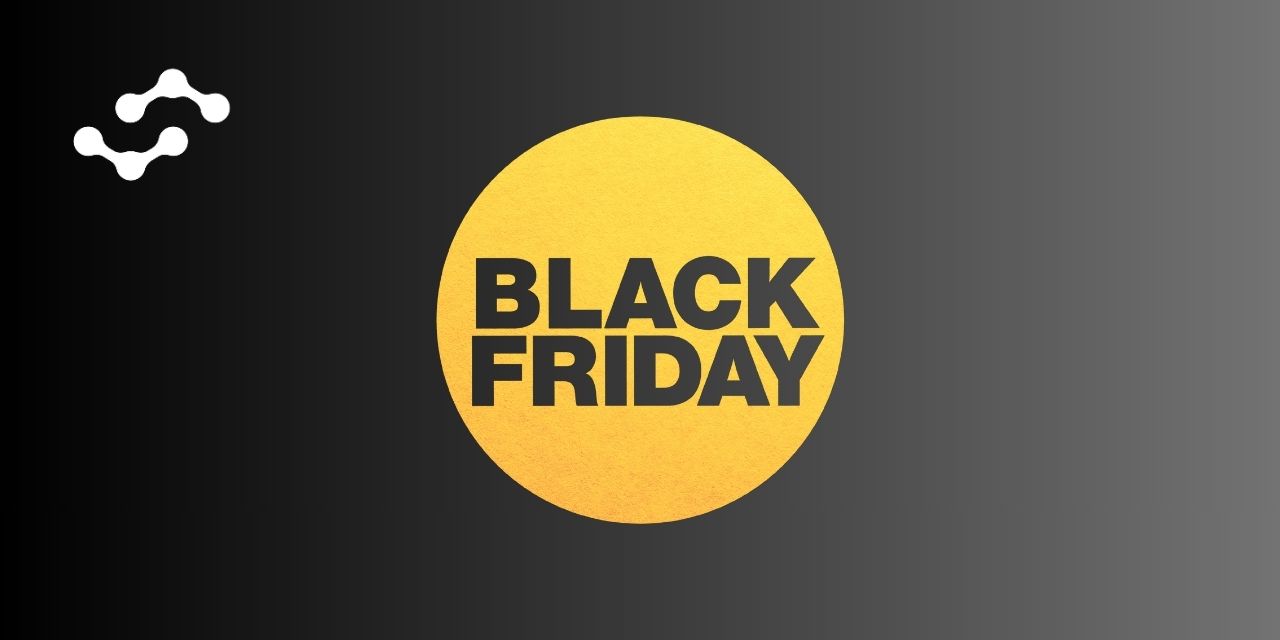
Dynamic Pricing on Black Friday: Go Beyond Discounts to Protect Your Margin
09/22/2025 - Dynamic pricing
Black Friday has become an unmissable fixture on every retailer and brand's calendar. However, the pressure to offer the most aggressive discounts often pulls retailers into a race to the bottom that, while it may boost sales volume, can also devastate profitability. The key question is no longer how to sell more, but how to sell better. In fact, key analyses like PwC's Holiday Outlook 2025 identify dynamic pricing strategies as the fundamental tool that allows retailers to effectively manage their discounts and meet consumer price sensitivity.
This post explores how a well-executed dynamic pricing strategy is the answer to transforming Black Friday from a margin challenge into a strategic opportunity.
The Black Friday Dilemma: Sales or Profitability?
It's the same story every year: consumers expect massive discounts, and competitors launch increasingly aggressive offers. This dynamic creates a price war where sacrificing margin to capture demand seems like the only option. This race not only impacts immediate profits but also devalues brand perception and trains customers to buy only during major sales events.
Adding to this is the risk of inefficient inventory management. Without precise control, the most popular products can sell out too quickly at a suboptimal price, while other, slower-moving items are left in the warehouse, generating additional costs after the campaign ends.
"Many retailers see Black Friday as an unavoidable battle of discounts. The real opportunity, however, lies in using technology to make surgical pricing decisions that protect margins without sacrificing competitiveness."
— Antonio Tomás, CEO at Minderest & Reactev
Dynamic Pricing: The Strategic Tool for a Smarter Black Friday
Far from being a simple mechanism to lower prices, dynamic pricing is an intelligence system that puts retailers back in control. It involves automatically adjusting prices based on a set of predefined variables, such as market demand, inventory levels, competitor prices, and business objectives.
Beyond Price Matching: Set Rules to Protect Your Positioning and Margin
One of the greatest advantages of dynamic pricing is the ability to establish clear limits. You can configure minimum prices (price floors) based on your costs and desired margin, ensuring no sale is ever made at a loss. At the same time, maximum prices (price ceilings) allow you to capitalize on demand spikes without damaging your brand image. The system constantly adapts, modifying prices within these guardrails to respond to every market shift, protecting your positioning strategy at all times.
AI-Powered Promotion and Discount Optimization
Not all discounts are created equal. Artificial intelligence applied to pricing can accurately identify which products benefit most from a promotion and what the exact discount level is to maximize overall profit. Instead of applying a blanket 20% discount to an entire category, the technology can suggest variable discounts that incentivize purchases without unnecessarily cannibalizing margins, as demonstrated by AI-driven promotion strategies.
Use Case: Optimizing Margin in the Beauty Sector
The Challenge: Imagine an online beauty and fragrance retailer. For Black Friday, they decide to apply a general 25% discount to the entire "Perfume Gift Sets" category.
10:00 AM: A key competitor launches an aggressive flash sale on a hero perfume (a KVI), pricing it 5% lower. The busy e-commerce team, swamped with managing orders, doesn't notice. Sales of that KVI come to a screeching halt.
11:00 AM: Meanwhile, their "Advent Calendar," a high-demand product, is selling out rapidly with the 25% discount. It's out of stock by 2 PM. They've sold through all their inventory at a minimal margin, when real demand could have sustained a much smaller discount (e.g., 15%).
The Solution (With Dynamic Pricing): The same retailer sets up automated business rules:
- KVI Rule (Hero Perfume): Monitor the top 3 competitors. Match the lowest price, but set a price floor (cost + 8% margin) that it can never drop below.
- Stock Rule (Advent Calendar): If inventory drops below 50%, reduce the discount to 20%. If it drops below 20%, reduce the discount to 15%.
- Long-Tail Rule (Niche Makeup): Maintain a high margin (e.g., max 10% discount), as these products are less price-sensitive.
The Result: The system detects the competitor's flash sale on the perfume and instantly adjusts the price to remain competitive (without violating the price floor). Simultaneously, as the Advent Calendar sells, its price automatically adjusts upward, optimizing the profitability of each unit sold and extending the product's availability throughout the day. The team shifts from reacting too late to proactively managing profitability.
How does dynamic pricing work on Black Friday? Dynamic pricing on Black Friday uses algorithms to automatically adjust prices based on demand, stock, and competitor actions. Instead of applying blanket discounts, it allows you to optimize each offer to protect margins, ensure inventory turnover, and maximize profitability during the sales peak.
Steps to Implement an Effective Dynamic Pricing Strategy This Black Friday
Adopting dynamic pricing isn't just about activating software; it's about implementing a strategic process. These are the fundamental steps to ensure success.
1. Analyze Historical Data and Forecast Demand
Before defining any rules, it's crucial to analyze the performance of past campaigns. Identify consumer behavior patterns, which products were most sensitive to price changes, and what their price elasticity was. This information is the foundation for building predictive models that anticipate demand and allow you to make proactive decisions.
2. Strategically Segment Your Catalog
Not all products in your catalog play the same role. Segment your assortment to apply different strategies:
- Known Value Items (KVIs): Products whose prices are well-known to customers and are sensitive to competition.
- Long-Tail Products: Less price-sensitive items where margins can be higher.
- Seasonal or Campaign Products: Items with a very specific sales window where inventory turnover is key.
3. Set Up Automated Business Rules
This is where the strategy comes to life. Define your main objectives: do you want to maximize sales in a specific category, clear out stock of a certain product, or protect the margin on your star items? Automated business rules translate these objectives into concrete pricing actions.
- Discover how Reactev's software allows you to configure complex pricing rules to protect your margins on Black Friday. Request a demo
Key Synergies: Power Up Your Black Friday Strategy
The power of dynamic pricing multiplies when integrated with other strategic areas of e-commerce. As industry analyses point out, dynamic pricing is the underlying technology that enables retailers to implement the highly specific, real-time promotion and discount strategies needed to meet consumer price sensitivity.
- Integration with discount strategies: Use pricing intelligence to design more effective discount strategies, moving beyond fixed percentages to create offers with real value.
- Creation of personalized promotions: Data from dynamic pricing helps you better understand your customers and create optimal promotions for each consumer, increasing conversion and loyalty.
- Application to other Peak Season campaigns: The learnings and setup from Black Friday are an invaluable asset for optimizing other key campaigns during the Peak Season, creating a cycle of continuous improvement.

Frequently Asked Questions (FAQs) about Dynamic Pricing on Black Friday
Is dynamic pricing just about lowering prices?
No, quite the opposite. Its main value is finding the optimal price at any given moment. This can mean lowering it to be more competitive, but it can also mean raising it when demand is high or a competitor's stock is low, always with the goal of maximizing profitability.
Can I set limits to avoid selling at a loss?
Yes. An essential function of dynamic pricing tools is setting minimum prices (price floors) based on the product's cost and the minimum margin you want to achieve. This ensures that automation never compromises your profitability.
Is it complicated to implement before Black Friday?
Modern solutions like Reactev are designed for agile integration with major e-commerce platforms. With proper planning, it's possible to have the system configured and running in time for the campaign, allowing for strategic control from day one.
How does dynamic pricing help with inventory management?
By adjusting prices according to stock levels, you can accelerate the sale of overstocked products or, conversely, moderate demand for items with low inventory to prevent premature stockouts.
Conclusion: Transform Black Friday from a Cost Challenge to a Profit Opportunity
In today's competitive environment, facing Black Friday with a reactive pricing strategy means leaving control in the hands of your competitors. Dynamic pricing gives you the power back, turning pricing into a strategic lever to protect your margins, optimize your inventory, and build sustainable growth beyond seasonal sales peaks. It's time to stop surviving Black Friday and start winning it.
Ready to implement a winning pricing strategy this Black Friday? Talk to one of our experts.
Category: Dynamic pricing
